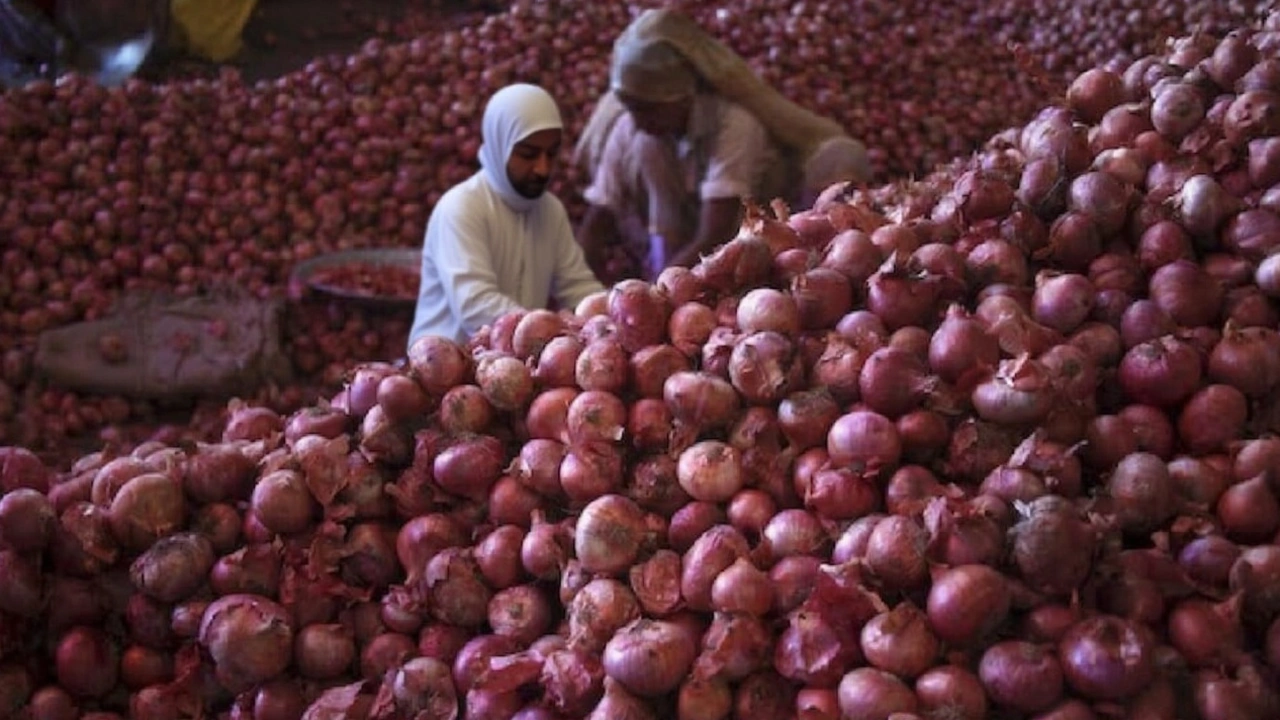Pakistan Sets 2.78 Million Tons Onion Production Target for 2025-26 Amid Record Growth

When the Federal Committee on Agriculture announced a 2.78 million-ton onion target for the 2025-26 crop year, it wasn’t just another agricultural footnote—it was a quiet revolution in Pakistan’s kitchen. The decision, made on November 19, 2025, in Islamabad, comes after a staggering 19.2% surge in production last season, turning a crop once plagued by shortages and imports into a domestic powerhouse. With cultivation planned across 168,000 hectares, this isn’t just about volume. It’s about stability. For millions of Pakistani households, onions aren’t a luxury—they’re the base of every meal. And now, the government is betting big that farmers can keep up.
Record Growth Fuels Ambitious Target
The 2024-25 season didn’t just meet expectations—it shattered them. Production jumped to 2.747 million tons from 2.3046 million tons the year before, thanks largely to Punjab’s explosive growth. There, onion cultivation expanded from 29,000 to 52,000 hectares—a 79.3% increase—and yields climbed 7.3% to 17,577 kg per hectare. The result? Punjab alone produced 914,000 tons, a 92.4% year-over-year spike. Nationally, the cultivated area ballooned by 16.8%, from 142,500 to 166,400 hectares. That kind of momentum doesn’t happen by accident. It’s the product of better seeds, improved irrigation, and—critically—government support.But the real story is in the provinces. For 2025-26, the Federal Committee on Agriculture allocated Sindh the largest share: 956,550 tons from 60,000 hectares. Balochistan follows with 884,500 tons, Punjab with 720,000 tons, and Khyber Pakhtunkhwa with 254,400 tons. The numbers are precise, almost surgical. No guesswork. This is planning at scale.
Why Onions Matter More Than You Think
Onions aren’t just flavor. They’re currency. In Pakistan, annual domestic consumption hovers between 1.6 and 1.8 million tons—meaning the country now produces nearly 50% more than it needs. That’s a seismic shift from just five years ago, when import spikes during monsoon failures sent prices soaring and sparked public outrage. In 2021, Pakistan ranked sixth globally in onion production with 2.25 million metric tons. Today, it’s on track to surpass that by 24%. The Ministry of National Food Security and Research has made it clear: self-sufficiency isn’t a goal anymore. It’s the baseline.“It’s an essential ingredient for household cooking throughout the year,” the official PID press release noted, underscoring what every Pakistani knows: no curry, no chutney, no sabzi is complete without it. When prices spiked in 2023, protests erupted. When they crashed in 2024 due to oversupply, farmers cried foul. The new target tries to walk that tightrope—boosting output without triggering a price collapse.
Fertilizer, Timing, and the Rabi Season Push
The rollout begins this November, as the Rabi season kicks off. And here’s one of the quietest wins: fertilizer availability. According to PROFIT by Pakistan Today’s October 24, 2025 report, Urea and DAP supplies are stable—no last-minute shortages, no black-market scrambles. That’s huge. For years, erratic fertilizer access choked production gains. Now, the federal government is coordinating directly with provincial agriculture departments to ensure inputs reach the fields on time.It’s not just onions. The same November 19 meeting set targets for wheat (29.678 million tons), potato (8.916 million tons), gram (393,000 tons), and tomato (659,000 tons). But onion stands out—not just because of its volume, but because of its volatility. A bad onion season can trigger inflation. A good one can calm it.

What’s Next? Monitoring, Not Just Mandating
The real test won’t be the target on paper—it’ll be what happens in the fields between November and March. Will yields hold? Will weather cooperate? Will transport networks handle the harvest? The Federal Committee on Agriculture has pledged monthly monitoring across all four provinces, with satellite data and field reports feeding into a centralized dashboard. Provincial secretaries are now directly accountable.And there’s another layer: market intervention. In 2024, when prices dropped below Rs. 40 per kg in some areas, farmers abandoned fields. The government responded with a minimum support price pilot in Punjab. This year, they’re expanding it. If the onion glut returns, buyers won’t be the only ones benefiting—farmers will, too.
A Legacy in the Soil
Pakistan’s journey with onions is a microcosm of its agricultural evolution. Once reliant on imports from India and Egypt, the country now produces enough to export surplus—particularly to Afghanistan and Tajikistan. The 2025-26 target isn’t just about feeding families. It’s about building resilience. It’s about turning a humble bulb into a symbol of national self-reliance.And here’s the twist: this success didn’t come from grand policies. It came from farmers planting more, using better techniques, and believing—finally—that the system might work for them.
Frequently Asked Questions
How does this affect everyday Pakistani households?
With onion production exceeding domestic demand by nearly 50%, prices are expected to remain stable or even decline slightly in 2025-26, easing inflationary pressure on low-income families. The average household spends 8-12% of its monthly food budget on onions; stable prices mean more disposable income for other essentials like rice, lentils, and cooking oil.
What led to the 19.2% production jump in 2024-25?
The surge was driven by a 79.3% expansion in cultivated area in Punjab alone, coupled with improved seed varieties and better water management. Government subsidies on DAP fertilizer and extension services helped farmers adopt high-yield varieties like ‘Punjab Red’ and ‘Punjab White,’ which mature faster and resist fungal rot—key factors in last season’s success.
Why is Sindh allocated the largest onion production share?
Sindh’s warm climate and extensive irrigation from the Indus River system make it ideal for winter onion cultivation. The province has historically produced high-quality bulbs with longer shelf life, making it the preferred source for national distribution. The 60,000-hectare allocation reflects its proven capacity and infrastructure for storage and transport.
Are there risks to hitting the 2.78 million-ton target?
Yes. Unseasonal rains during the Rabi season could damage crops in Sindh and Balochistan. Also, if global onion prices drop (as they did in 2024), farmers might shift to more profitable crops like sugarcane. The government’s minimum support price initiative is critical to prevent another collapse in farmer incomes.
How does this compare to global onion production trends?
India remains the world’s top producer at over 25 million tons annually, followed by China and Egypt. Pakistan’s 2.78 million-ton target puts it ahead of Iran and Turkey, and close to Egypt’s 2.9 million tons. Unlike many nations, Pakistan’s growth is domestic-driven—not export-led—making it uniquely resilient to global market swings.
What role does the Federal Committee on Agriculture play beyond setting targets?
The committee doesn’t just set numbers—it coordinates federal-provincial policy alignment, monitors input supply chains, and resolves inter-provincial disputes over water and market access. It’s the only body with authority to mandate synchronized crop planning across all four provinces, making it the engine behind Pakistan’s agricultural stability.




